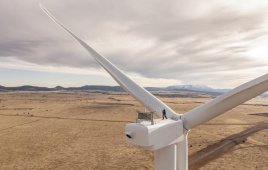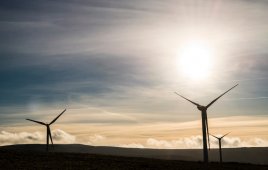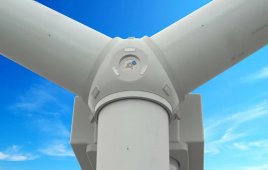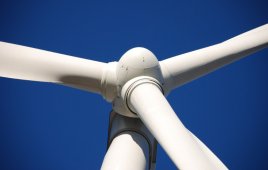There are two basic types of wind turbines: vertical and horizontal axis. Each has pros and cons. Horizontal-axis turbines tend to capture more power per square meter of wind, but are noisier, vibrate more, present hazards to birds, require more empty space around them, and must be elevated away from people. Vertical-axis turbines, on the other hand, are quiet and do not need to turn towards the wind to maximize their power output.

The blue cap and base on the Wind Lotus are said to focus the wind onto the blades and therefore improve their energy capture.
Turbines can also be classified as lift turbines and drag designs. Drag turbines simply rotate from the push of the wind. They start easily, but cannot move faster than the push from the wind. Lift turbines use aerodynamic blades to rotate faster than the mere push of the wind would allow, but this class has more difficulty starting.
The Wind Lotus from Leviathan Energy, Los Angeles, is said to have advantages of both. The patent-pending aerodynamic shape is one reason for its good performance. In addition the design uses five blades, whereas almost all lift turbines, whether horizontal or vertical, have three. This translates to more starting power, better balance, and minimal noise.
The aerodynamic design increases wind velocity where it hits the blades letting the turbine produce more power than larger units. The Wind Lotus is said to have a lower cut-in speed than other turbines which increases its cost effectiveness. Cut-in speed is the wind speed at which the turbine starts to produce electricity. The aerodynamic design improves its performance over other turbines so it produces more power. The table presents a few specs.
Filed Under: Turbines




